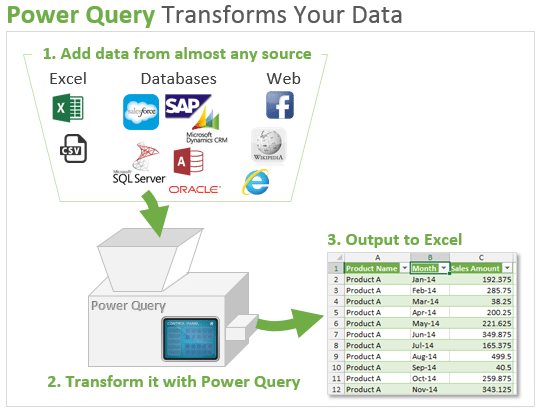
It loads the Sales Data in the existing worksheet/ new worksheet, as shown below. Step 12. Select Table > Existing Worksheet or New Worksheet > OK. This option allows you to load the data as Table, PivotTable, PivotTable Chart, etc. Step 11. Click Close & Load > Close & Load To… Step 10. To load the data into the Excel worksheet, go to Home in the Query Editor Ribbon We can work more on this data or prepare compelling reports by adding (loading) it into the Excel worksheet. The Editor adds a new column to the data, as shown below. To add the formulated data to the existing one, click the Add Column tab in the Editor Ribbon, enter the New column name as Margin%, the Custom column formula as /, and click OK. We want to find the Margin in percentage therefore, we will use the formula / and add the formulated values to a new column. Here, we can give a name to the new column and enter a formula to provide calculated values. It will allow you to create a new calculated column based on the custom formula.Ī Custom Column window appears on the screen. Step 8. To add a new column to the data, click Add Column > Custom Column under the General Group. We can add a column with computed/ calculated values to the existing data. The values in the Date column have now changed to the proper format, as shown below. Step 7. A new window, Change Column Type, appears on the screen. Step 6. To convert the date into the proper format, select and right-click on the Date column header, then select Change Type and click Date. In the transformed data, the date is not in the proper format, as shown below.

The Power Query Ribbon has five options- File, Home, Transform, Add Column, and View.

Once you click the Transform Data tab, the Power Query Editor window opens with the transformed data. Cancel– It cancels or nullifies all other operations under the Power Query.Ĭlick on the Transform Data tab.You can also add a column with calculated values, change the format of specific columns, add or remove columns, group columns, etc. Transform Data- It allows you to transform the data files irrespective of the source.


Noted: Power Query lists all the files irrespective of the file type.


 0 kommentar(er)
0 kommentar(er)
